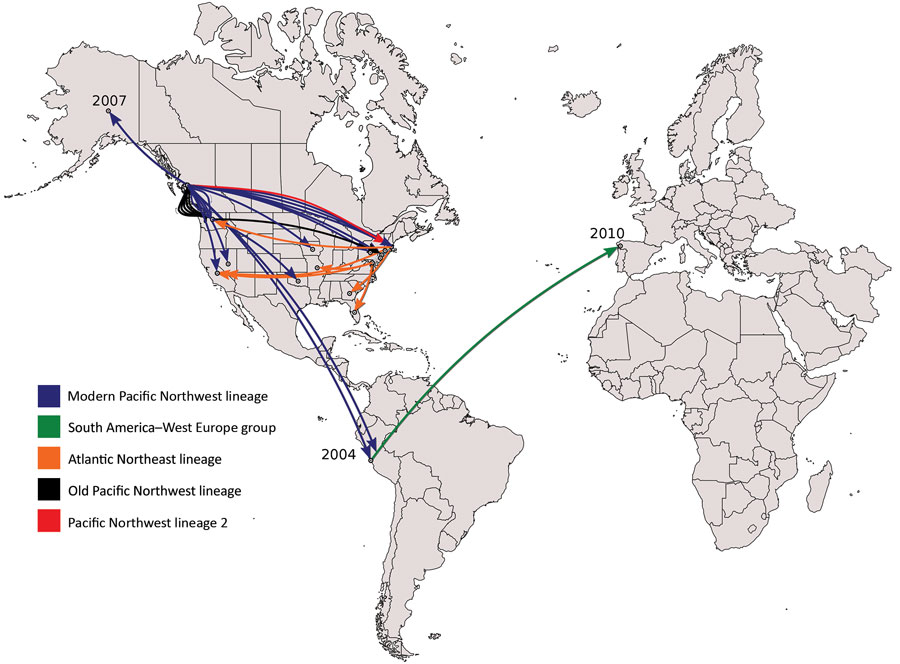Volume 26, Number 2—February 2020
Dispatch
Global Expansion of Pacific Northwest Vibrio parahaemolyticus Sequence Type 36
Figure 2

Figure 2. Transcontinental spread of Vibrio parahaemolyticus sequence type 36, North America, Peru, and Spain, 1985–2016. Timeline was estimated by using BEAST (Bayesian evolutionary analysis by sampling trees). Years on map indicate the inferred dates of arrival of V. parahaemolyticus sequence type 36 to that country. Old Pacific Northwest is the ancestral population (last strain identified in 2002) of the Pacific Northwest lineage complex, which also includes the modern (i.e., currently circulating) Pacific Northwest lineage, Pacific Northwest lineage 2, Atlantic Northeast lineage, and the South America–West Europe group.
Page created: January 20, 2020
Page updated: January 20, 2020
Page reviewed: January 20, 2020
The conclusions, findings, and opinions expressed by authors contributing to this journal do not necessarily reflect the official position of the U.S. Department of Health and Human Services, the Public Health Service, the Centers for Disease Control and Prevention, or the authors' affiliated institutions. Use of trade names is for identification only and does not imply endorsement by any of the groups named above.